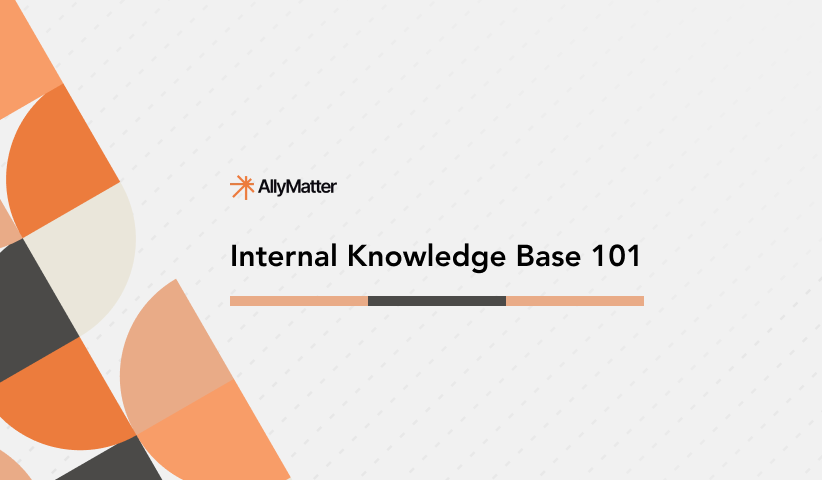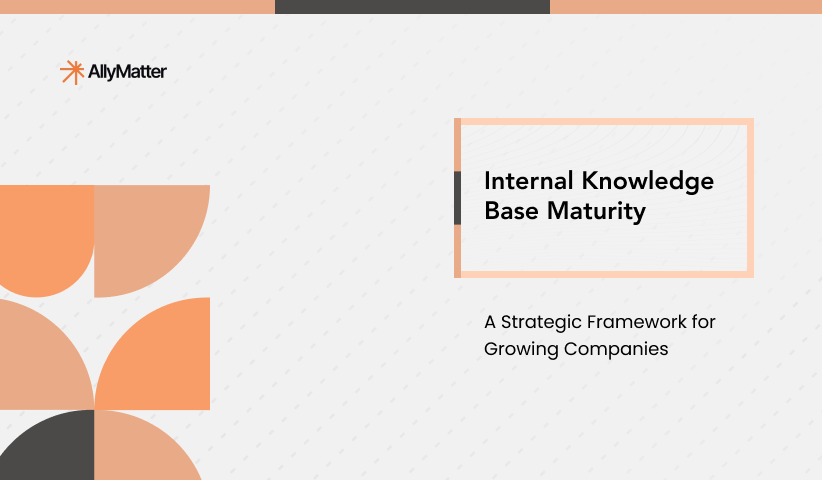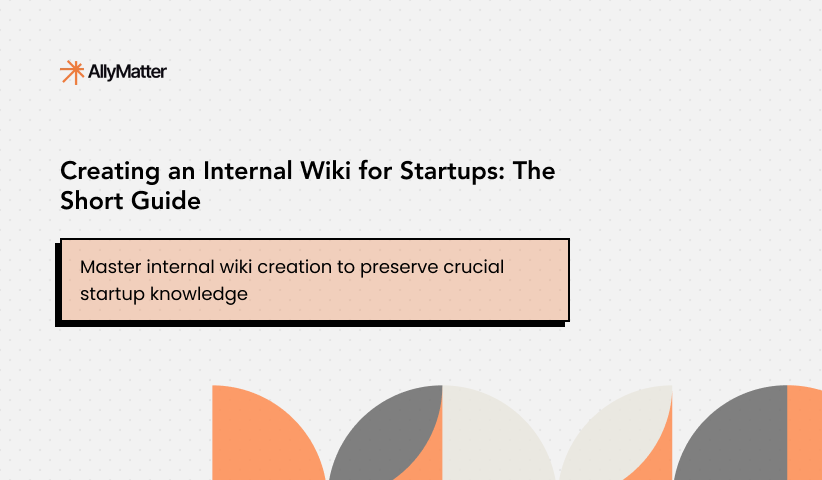Your engineering team just lost a senior developer who took years of system knowledge with them. Meanwhile, your sales team is recreating pricing sheets that already exist somewhere in a shared drive, and new hires are spending weeks just figuring out where to find basic company information.
This exact scenario destroys productivity at companies every day. The difference between organizations that scale smoothly and those that hit walls? It’s not funding or talent. It’s whether they’ve figured out how to capture and share what their people actually know.”
An internal knowledge base transforms scattered information into a strategic asset that grows with your company. When implemented correctly, it becomes the operational foundation that enables consistent processes, faster onboarding, and preserved expertise.
What is an internal knowledge base
An internal knowledge base is a centralized repository where organizations store, organize, and share critical information needed for daily operations. Unlike external documentation designed for customers, internal knowledge bases contain company policies, procedures, best practices, and institutional knowledge that employees need to perform their roles effectively.
The most effective internal knowledge bases serve three essential functions. They act as the single source of truth for company policies and procedures, ensuring everyone works from the same information. They capture operational knowledge that typically exists only in employees’ minds, preserving the expertise that makes your organization unique. Finally, they support compliance requirements and audits, providing documented evidence of proper procedures and governance.
For growing companies, an internal knowledge base becomes increasingly critical as informal knowledge sharing breaks down. What works perfectly for a ten-person startup becomes chaotic at fifty employees and nearly impossible at 200.
Here are the signs your current system needs help:
- New hires ask where to find basic company info.
- Teams recreate documents that already exist.
- Critical knowledge lives in one person’s head.
- Compliance prep becomes a search mission.
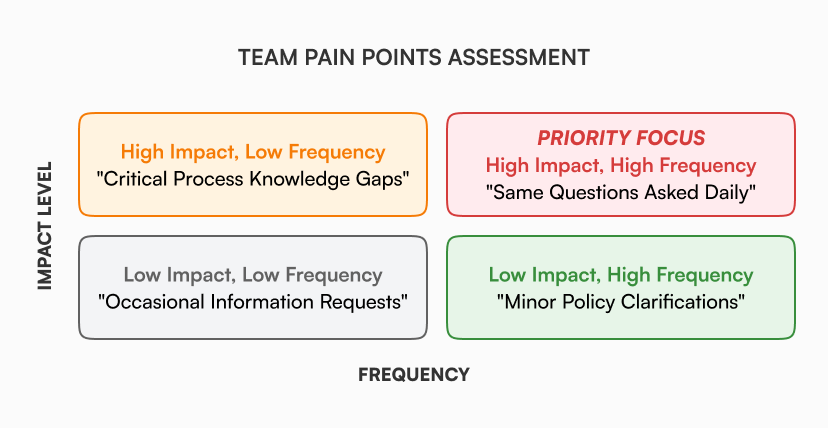
For organizations currently struggling with tools like SharePoint or Google Docs for knowledge management, understanding why these platforms fall short helps clarify the specific requirements of effective internal knowledge bases.
Core benefits for growing organizations
Operational consistency at scale
When processes are documented and accessible, teams deliver consistent results and avoid repeating work that already exists. This consistency reduces errors, improves quality, and creates predictable outcomes that customers can rely on.
Consider a customer success team handling enterprise implementations. Without documented processes, each manager develops their own approach, leading to inconsistent customer experiences and repeated mistakes. With standardized procedures, every customer receives the same high-quality experience, and team members can learn from collective expertise rather than individual trial and error.
Knowledge preservation and continuity
According to Panopto research, 42% of institutional knowledge is unique to individual employees and isn’t documented elsewhere in the organization. When key team members leave, they take years of crucial context and process understanding with them unless that information has been properly captured.
For example, A finance director at a growing SaaS company discovered this when their senior accountant left mid-quarter. The team found that entire month-end processes existed only in her head. Routine procedures became week-long detective work through old emails and incomplete notes.
This challenge becomes particularly acute during periods of high turnover. Learn specific strategies for preserving institutional knowledge amid workforce shortages.
An internal knowledge base transforms vulnerable tacit knowledge into preserved explicit knowledge. This continuity becomes increasingly valuable as your company matures and early team members transition to new roles or opportunities.
Accelerated employee productivity
According to research by the Society for Human Resource Management, new employees typically require approximately 8-12 months to achieve full productivity in professional positions. Well-organized internal documentation significantly reduces this timeline by providing immediate access to the information new employees need to understand their roles and contribute effectively.
Beyond onboarding, accessible documentation reduces the daily friction of finding information. According to McKinsey, employees spend nearly 20% of their workweek searching for internal information or tracking down colleagues for help. Also, the 2022 Gartner Digital Worker survey found that 47% of digital workers struggle to find the information they need to perform their jobs effectively. Internal knowledge bases solve this productivity drain directly.
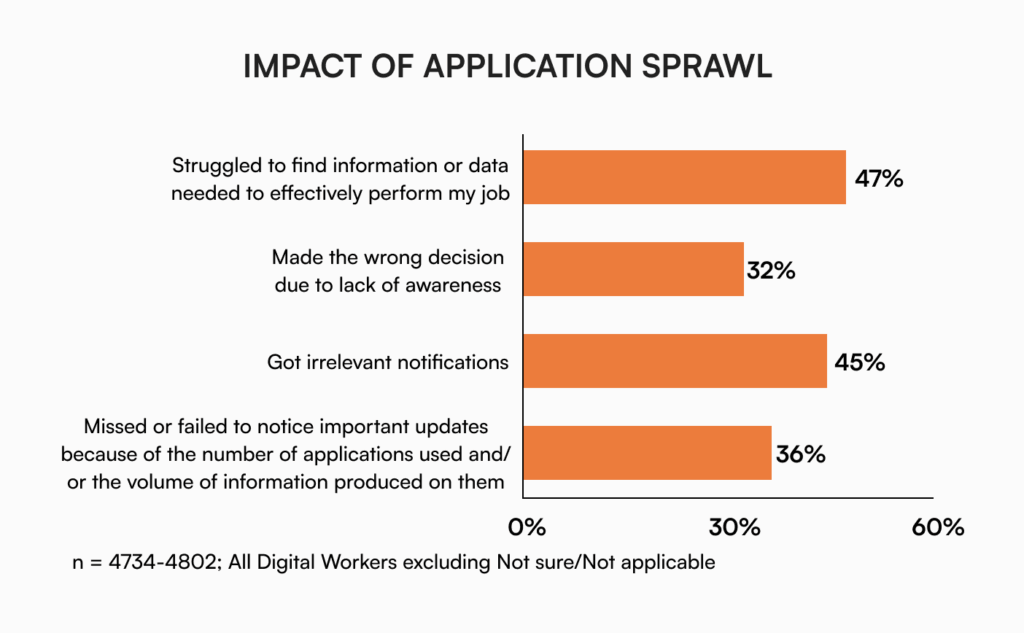
Enhanced compliance and risk management
For companies in regulated industries, internal knowledge bases create essential audit trails and demonstrate regulatory compliance. During audits, the ability to quickly produce current documentation often determines the scope and outcome of regulatory reviews.
Beyond formal compliance, documented procedures reduce operational risks by ensuring consistent adherence to best practices and safety protocols. When everyone follows documented procedures, organizations can identify and address process improvements systematically rather than reactively.
Essential components of effective internal knowledge bases
Structured information architecture
The foundation of any successful internal knowledge base is a logical structure that mirrors how people actually work and search for information. Effective organization goes beyond simple folder hierarchies to create multiple pathways for discovering relevant content.
Hierarchical organization: Start with a clear structure that goes no more than three levels deep. This might follow patterns like Department → Process Category → Specific Process. For example: Accounting → Accounts Payable → Vendor Setup Process.
Cross-functional accessibility: Organize content by function rather than department when processes span multiple teams. Instead of separate HR and Finance sections for expense policies, create a comprehensive “Expense Management” section that includes all relevant information regardless of departmental ownership.
Metadata and tagging: Implement both automated and manual tagging systems that allow content to be discovered through multiple paths. Documents about customer refund processes might be tagged with “customer service,” “finance,” “policy,” and “procedures,” making them discoverable by different teams with different perspectives.
For detailed implementation guidance, see our complete guide on how to structure an internal knowledge base.
Quality content standards
Consistency in format and style makes your knowledge base easier to navigate and more professional to use. Every document should follow standardized templates that include essential metadata like document owner, last updated date, review schedule, and approval status.
Template enforcement: Create different templates for various document types, each with standardized sections. Process documentation should include purpose, scope, required tools, detailed steps, expected outcomes, and troubleshooting guidance. Policy documents require different structures than procedural guides or reference materials.
Writing clarity: Use plain language, active voice, and clear examples throughout your documentation. Break complex processes into distinct steps and include visual aids where they add value. Remember that your primary audience is often someone unfamiliar with the process.
Version control: Maintain comprehensive version history that shows who made changes, what was changed, when changes occurred, and why they were made. This audit trail proves essential for compliance and helps teams understand how processes evolve over time.
Access control and security
Growing organizations need sophisticated permission systems that balance accessibility with security. Role-based access controls ensure team members can find what they need while protecting sensitive information.
Granular permissions: Implement permissions based on roles, departments, and specific needs. Customer-facing team members need access to product information and customer service procedures but may not require visibility into financial policies or strategic planning documents.
Dynamic access management: Configure systems to automatically adjust access as team members change roles or departments. This reduces administrative burden while maintaining appropriate security controls.
Audit capabilities: Track who accesses what information and when. This visibility supports both security monitoring and content optimization by revealing which resources are most valuable to different teams.
Implementation framework for growing companies
Phase 1: Foundation and planning
Start by assessing your current documentation landscape and defining clear objectives for your internal knowledge base. Conduct a content audit to identify existing documentation, its quality, and current storage locations. This assessment reveals gaps and helps prioritize initial content development.
Stakeholder alignment: Engage key stakeholders from each department to understand their specific documentation needs and challenges. HR managers might prioritize policy documentation and onboarding materials, while IT administrators focus on system procedures and troubleshooting guides.
Platform selection: Choose a knowledge base platform that supports your current needs while providing room for growth. Essential features include robust search capabilities, version control, approval workflows, and integration with your existing tools.
For budget-conscious organizations, consider exploring open source knowledge base solutions that provide enterprise features without licensing costs.
Content prioritization: Begin with high-impact, frequently used processes that create immediate value. Document procedures that are currently performed inconsistently across teams or that rely heavily on specific individuals’ knowledge.
Phase 2: Content creation and migration
Develop a systematic approach to creating and migrating content that ensures consistency and quality. Establish clear content creation guidelines and approval workflows that maintain standards while encouraging contribution.
Collaborative development: Involve subject matter experts in content creation while maintaining centralized oversight of quality and consistency. Create templates and guidelines that make it easy for non-writers to contribute valuable content.
Migration strategy: When moving content from existing systems, take the opportunity to update and improve documentation rather than simply transferring outdated materials. Consolidate duplicate content and ensure all information meets current quality standards.
Quality assurance: Implement review processes that verify both technical accuracy and usability. Test procedures with actual users to ensure instructions are clear and complete.
Phase 3: Adoption and optimization
Successful implementation requires active change management to drive adoption and continuous improvement. Integration with existing workflows makes the knowledge base part of daily operations rather than an additional system to remember.
Training and communication: Provide comprehensive training that covers both finding information and contributing content. Regular communication about new resources and improvements keeps the knowledge base visible and relevant.
Usage analytics: Monitor how teams use your knowledge base to identify popular content, common search terms, and areas where users struggle to find information. This data guides both content development and structural improvements.
Feedback mechanisms: Create simple ways for users to report outdated information, suggest improvements, or request new content. Responsive improvement cycles build trust and encourage ongoing engagement.
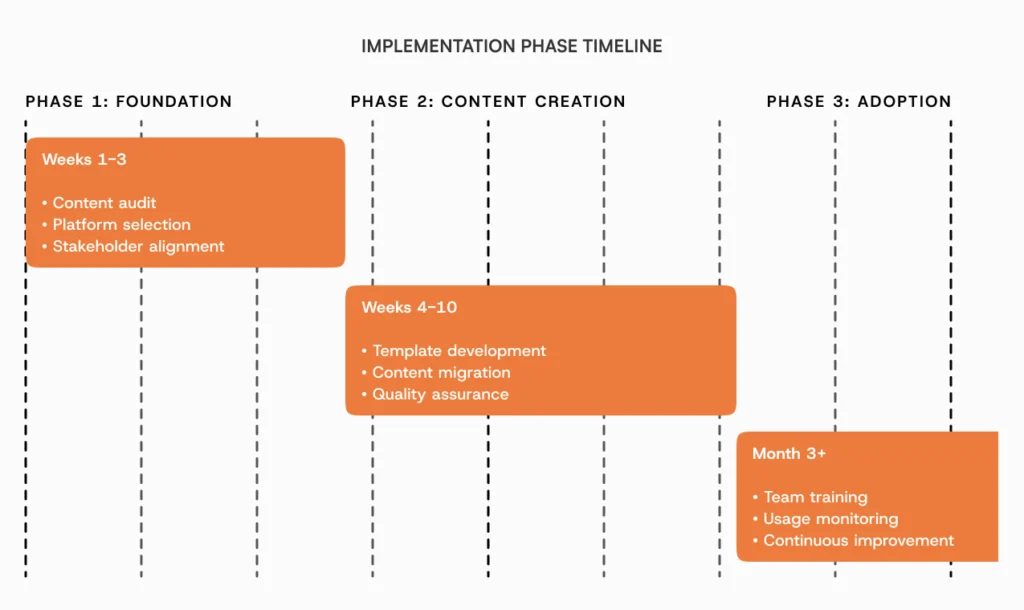
Related implementation guides:
- Internal Knowledge Base Best Practices
- A Strategic Guide to Internal Knowledge Base Maturity
- The Small Business Guide to Internal Knowledge Management
Best practices for different organizational functions
Human resources documentation
HR departments benefit from tiered documentation systems that balance transparency with confidentiality. Universal policies like vacation time and company handbook information should be accessible to all employees, while sensitive procedures like investigation protocols require restricted access.
Effective HR knowledge bases include employee onboarding workflows, policy documentation with clear effective dates, compliance procedures with audit trails, and benefit information with regular updates. The most successful implementations integrate directly with HR systems to ensure information stays current.
For detailed HR-specific strategies, see our guides on:
- Everything You Need to Know About Building a Knowledge Base for HR
- Internal Knowledge Base – HR Department Use Cases
- HR Knowledge Bases – A Complete 2025 Guide
- HR Excellence: Top 8 Knowledge Base Solutions
Operations and finance procedures
Financial and operational documentation demands precision and careful access control. These procedures often involve regulatory compliance and require comprehensive audit trails that track every change and approval.
Key elements include step-by-step procedures with role-based permissions, decision trees for approval workflows, real examples with sensitive information redacted, and clear escalation paths for exceptions. Integration with financial systems helps maintain accuracy and reduces manual updates.
Related reading: The Indispensable Value of Comprehensive Documentation in Operations
Sales and marketing processes
Sales and marketing teams need quick access to accurate information while working with clients and prospects. Documentation should be organized by customer journey stages and common scenarios rather than internal departmental structures.
Essential components include scenario-based guides mapped to customer interactions, competitive positioning information, pricing and product documentation with version control, and escalation procedures for complex situations. Mobile accessibility becomes particularly important for field teams.
Also read:
- Creating a Comprehensive Sales Messaging Library for Growth
- How to Build a Knowledge Base for Marketing Teams
- Top 10 Internal Knowledge Base Use Cases for Marketing Teams
Technical and IT documentation
Technical documentation requires different approaches for different audiences. System administrators need detailed technical procedures, while end users require simplified guides focused on common tasks.
Effective technical knowledge bases include system architecture documentation with security considerations, troubleshooting guides with common solutions, user guides with screenshots and visual aids, and integration procedures with testing protocols. Regular updates become critical as systems and tools evolve.
Measuring success and ROI
Operational efficiency metrics
Track improvements in operational efficiency. Focus on time spent searching for information, repeated questions to experts, and process consistency across teams and locations.
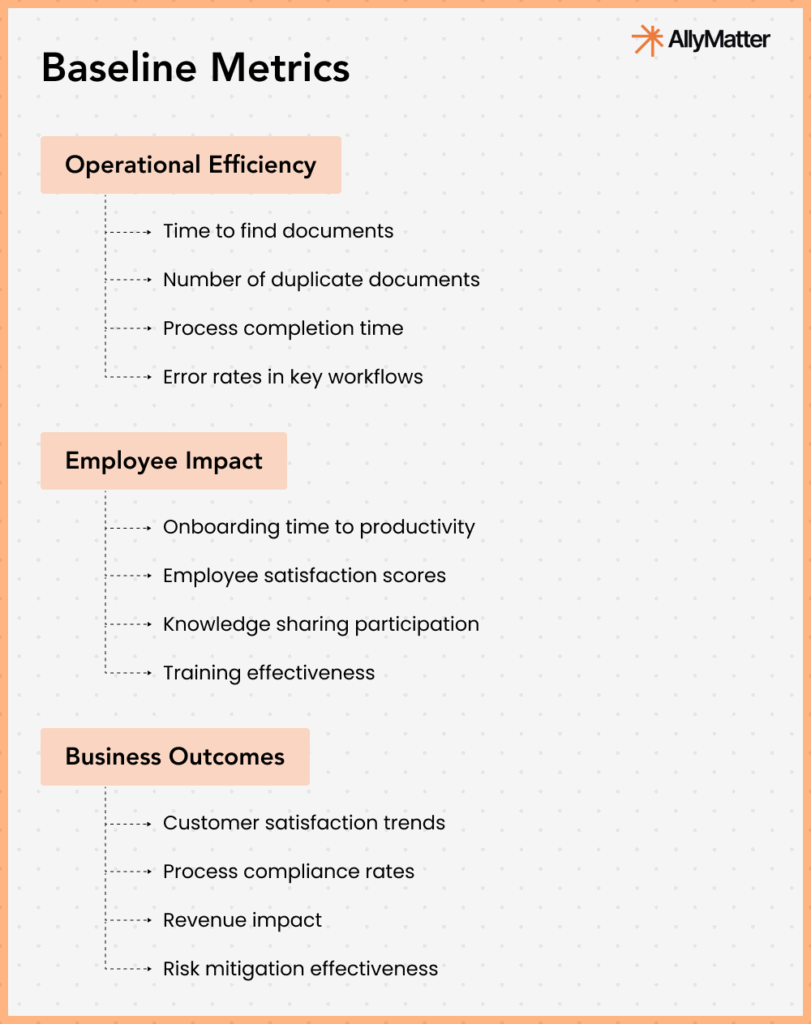
Employee productivity metrics reveal the broader impact of accessible knowledge. Measure onboarding time for new hires, error rates in documented processes, and employee satisfaction with information accessibility. These metrics connect documentation quality to business outcomes.
Knowledge retention indicators
Assess how effectively your knowledge base preserves and transfers institutional knowledge. Track coverage of critical processes, frequency of knowledge updates, and continuity during employee transitions.
Knowledge utilization patterns show which information provides the most value and where gaps might exist. Monitor content usage, search success rates, and user feedback to guide continuous improvement efforts.
Business impact measurement
Connect knowledge base effectiveness to strategic business metrics. Document improvements in compliance audit outcomes, customer satisfaction scores, and process standardization across locations or teams.
Revenue and cost impact can often be traced to better documentation through reduced errors, faster project completion, and improved customer experiences. While these connections may be indirect, they represent the true value of organizational knowledge management.
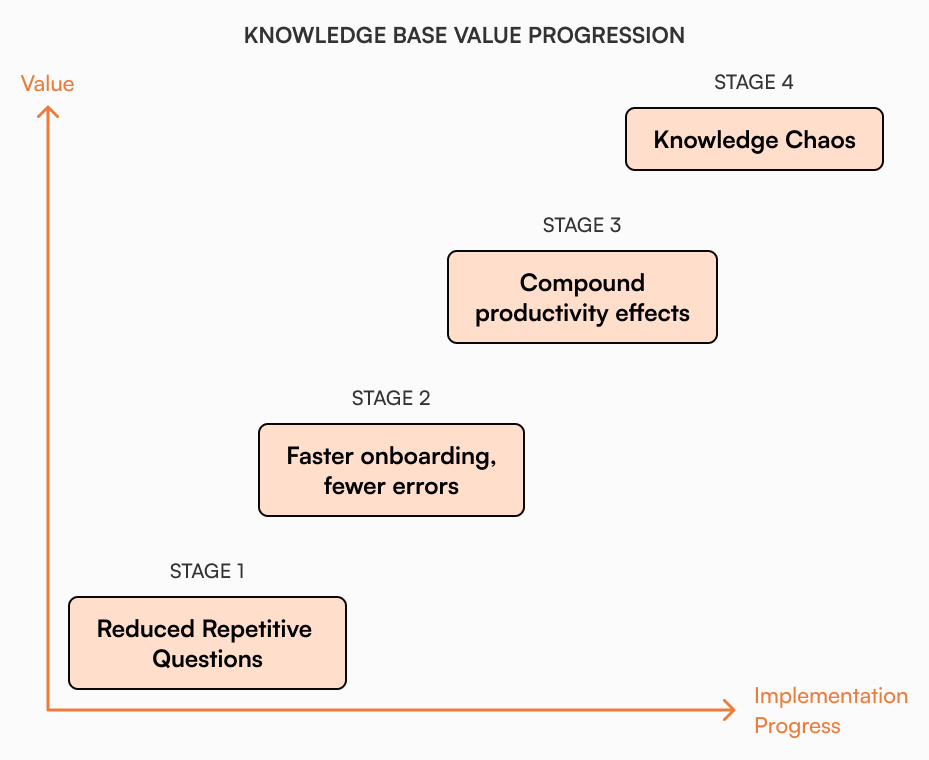
Advanced strategies for scaling organizations
Modern work gets complicated fast. Advanced strategies help manage that complexity. Research shows that workers toggle between applications nearly 1,200 times daily, spending approximately four hours per week just reorienting themselves after switching contexts, according to Harvard Business Review.
Automation and workflow integration
As organizations grow, manual knowledge management becomes unsustainable. Automated workflows can trigger documentation updates when processes change, route content through appropriate approval chains, and notify stakeholders of relevant updates.
Integration with existing business systems reduces friction and improves accuracy. When your knowledge base connects with project management tools, HR systems, and customer relationship platforms, information stays current without manual intervention.
Learn implementation details in Creating an Automated Internal Knowledge Base System.
Analytics and predictive capabilities
Sophisticated organizations use knowledge base analytics to anticipate information needs before they become widespread problems. Search patterns, content consumption sequences, and user behavior data reveal emerging knowledge gaps that can be addressed proactively.
Predictive content development based on seasonal patterns, product releases, and organizational changes ensures resources are available when teams need them most. Organizations implementing predictive analytics for knowledge management can anticipate information needs before they become widespread problems.
Global and remote team considerations
Distributed teams require specialized approaches to knowledge management that account for time zones, cultural differences, and varying technology access. Documentation must be more comprehensive since informal knowledge sharing happens less naturally in remote environments.
Cultural adaptation becomes important for global organizations where processes may need variation for different regulatory environments or local business practices. Create core templates that establish fundamental requirements while allowing for documented regional variations.
See our guide on Effective Knowledge Sharing for Remote & Asynchronous Teams.
Common challenges and solutions
Adoption and engagement obstacles
Low adoption rates plague many knowledge base implementations. Teams fall back on familiar patterns of asking colleagues directly rather than searching for documented answers. Address this by integrating knowledge base usage into existing workflows and making it easier to find information than to ask questions.
Recognition and incentive programs that reward both knowledge creation and usage help build positive feedback loops. Celebrate teams that effectively document their processes and individuals who contribute valuable improvements.
Content quality and maintenance
Outdated information undermines trust in your knowledge base and can create more problems than having no documentation at all. Establish clear ownership for each content area and implement automated review reminders based on content criticality.
Good governance keeps documentation from becoming a mess. Set standards for writing style, visuals, and approval processes. Define standards for writing style, visual elements, and approval processes that maintain quality while encouraging contribution.
Technology and integration challenges
Technology that’s hard to use becomes a roadblock instead of a help. Keep things simple, especially when you’re starting out. Prioritize user experience and simplicity over feature complexity, especially in early implementation phases.
Single sign-on integration and mobile accessibility reduce friction that might discourage usage. When team members can access information easily from any device without additional login requirements, adoption increases significantly.
For organizations evaluating different platform approaches, understanding the need for an internal knowledge base solution helps clarify the advantages of dedicated systems over all-in-one platforms that may seem convenient but often lack the specialized features growing companies require.
How AllyMatter supports internal knowledge base success
AllyMatter addresses the specific challenges growing companies face when implementing internal knowledge bases. Our platform combines ease of use with enterprise-level features, allowing organizations to start simple and scale sophistication as they grow.
Structured organization capabilities: AllyMatter’s intelligent categorization system helps create intuitive knowledge hierarchies that mirror your company’s natural workflows. Custom tags and metadata search make information discoverable through multiple paths without creating overwhelming complexity.
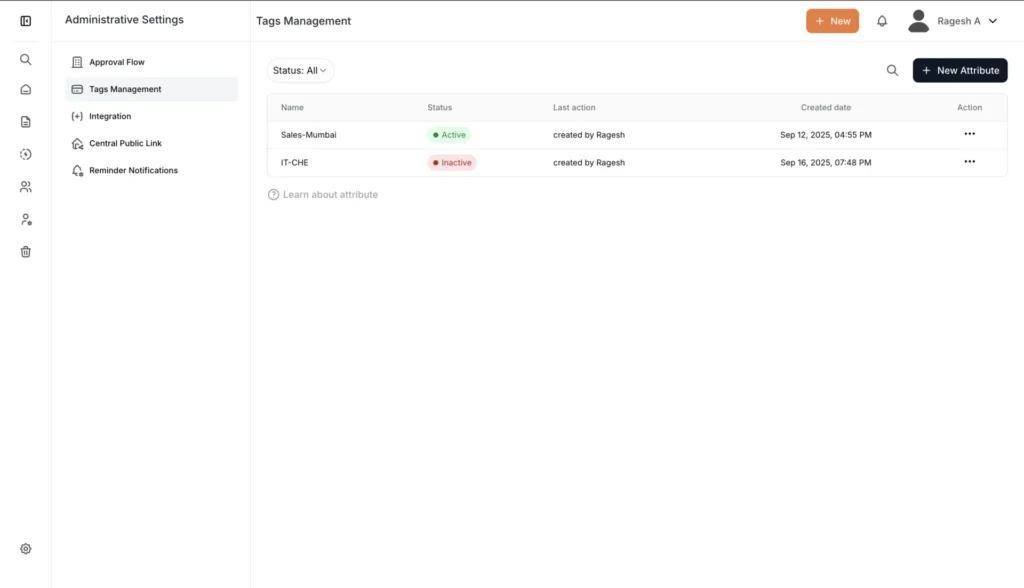
Collaborative workflows: Built-in approval processes ensure content quality while streamlining review cycles. Multiple stakeholders can provide input and approval digitally, reducing delays and maintaining clear accountability for content accuracy.
Access control and security: Granular role-based permissions balance information accessibility with appropriate security controls. Team members see only the content relevant to their roles while maintaining transparency where beneficial.
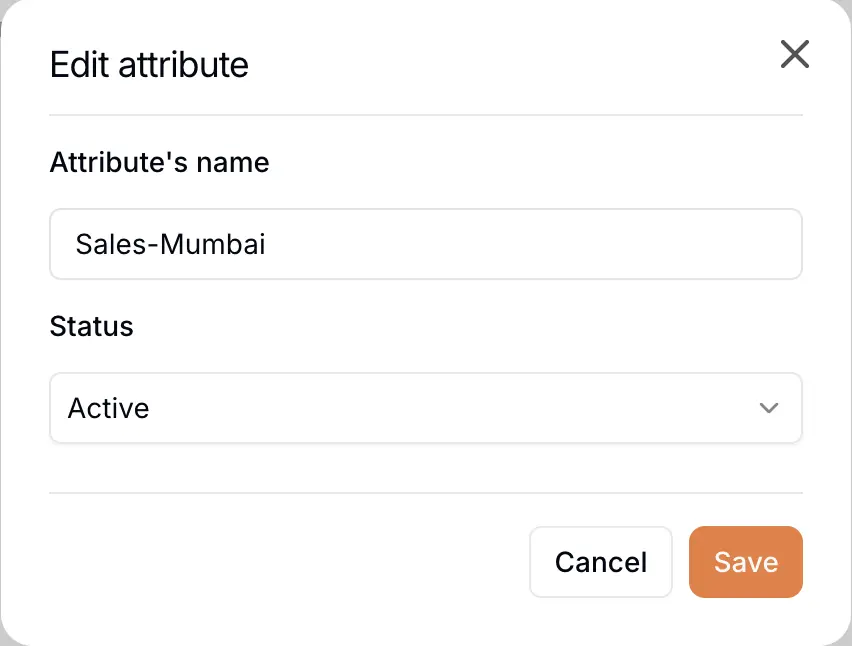
Version control and audit trails: Comprehensive change tracking provides the accountability and compliance support that growing organizations require. Every modification is logged with clear attribution and reasoning.
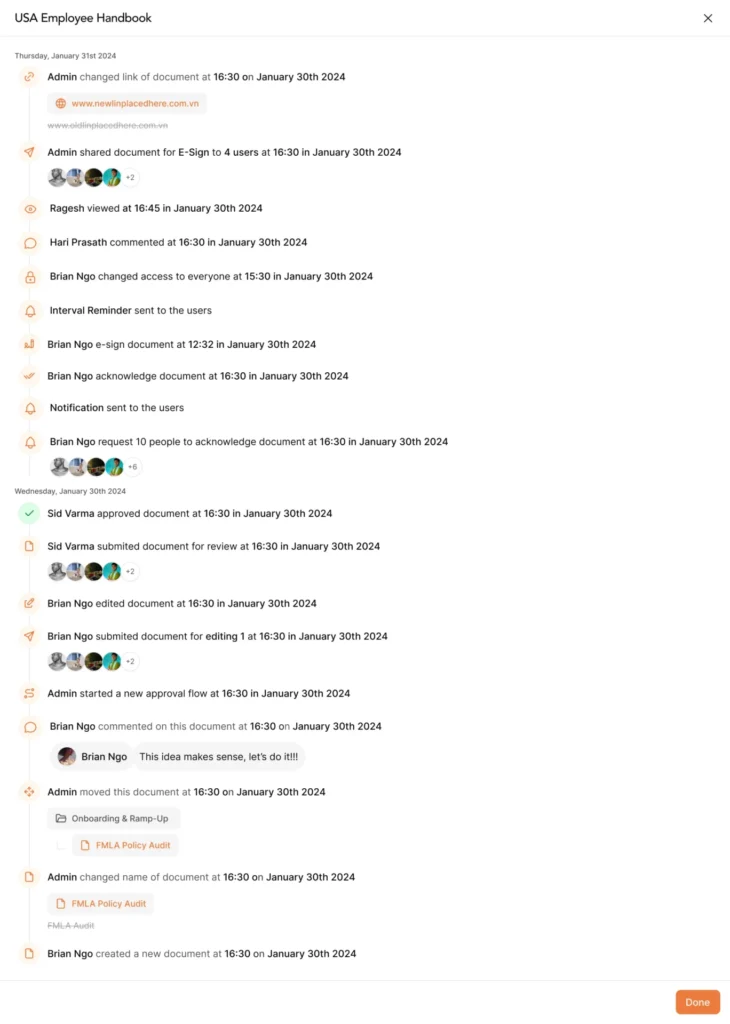
Search and discovery: Advanced search capabilities understand natural language queries and surface relevant content even when users don’t know exact terminology. Related content suggestions help users discover information they might not have thought to seek.
Building your knowledge foundation
Creating an effective internal knowledge base represents an investment in your organization’s operational foundation. Like any infrastructure investment, the benefits compound over time as your team grows and processes become more sophisticated.
Success requires commitment to both initial implementation and ongoing maintenance. Knowledge bases work best when they grow and change with your organization. Regular updates based on user feedback keep them valuable.
Start with clear objectives and realistic scope. Document your most critical processes first, establish quality standards, and build adoption gradually. As your knowledge base proves its value, expand coverage and sophistication to match your organization’s growth.
If you’re an organization just beginning your documentation journey, we recommend reading:
- The Small Business Guide to Internal Knowledge Management
- A Short Guide to Internal Wiki for Startups
Technology alone doesn’t solve knowledge problems. The combination of good tools, clear processes, and organizational commitment transforms scattered information into strategic assets that enable sustainable growth.
Whether you’re a startup looking to establish documentation practices or a growing company seeking to improve existing knowledge management, the principles and practices outlined here provide a foundation for success. The investment in organized, accessible knowledge pays dividends through improved efficiency, reduced errors, and preserved institutional wisdom that grows with your organization.
If you’re ready to stop losing knowledge when people leave and start scaling with confidence, AllyMatter might be worth exploring. Join the waitlist to see how we’re solving knowledge management for growing companies.
Frequently asked questions
What’s the biggest mistake companies make with their first knowledge base?
They try to document everything at once instead of focusing on their biggest pain points first. Teams often burn out creating perfect documentation for every single process. Start with the knowledge that walks out the door when people leave; that’s the highest-value content.
How do we know if we’re ready for a dedicated knowledge base platform?
When teams spend more time searching Google Drive than actually working, you’re ready. If new hires take weeks to find basic information or if the same questions get asked repeatedly across Slack channels, scattered documentation is costing real productivity.
Should we hire someone to manage our knowledge base full-time?
Not initially. Assign ownership to someone who already understands processes, usually an operations manager or senior team lead. Full-time knowledge managers make sense once you hit 200+ employees, but most growing companies succeed with part-time ownership and clear contributor guidelines.
How do we handle pushback from teams who don’t want to document their processes?
Start with the teams that are already feeling the pain. Usually that’s customer support, HR, or operations – departments where people ask the same questions repeatedly. Once other teams see the productivity gains, they’ll start asking how to get involved.
What if our processes change too frequently to document?
That’s exactly when documentation becomes most valuable. Growing companies change fast, but the alternative to documented processes isn’t flexibility. It’s chaos. Focus on documenting the framework and decision-making criteria rather than trying to capture every possible variation.
How long before we see actual results from our knowledge base?
Most teams notice immediate relief from repetitive questions within the first month. Real productivity gains, like faster onboarding and fewer process errors, typically show up in months two and three. The compound effect kicks in around month six when teams stop constantly firefighting information problems.
